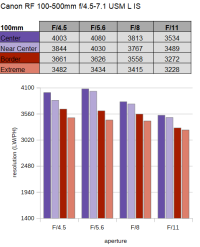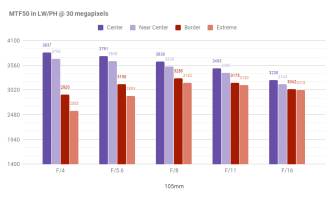I have written a Geek thread on this:
Another of my geek articles, which does have some implications for actual use. What I do here is to calculate the contributions of diffraction and sensor Mpx size (R5 vs R6) to the resolving power of the 400mm f/5.6 and 500mm f/7.1 zooms and the 600mm and 800mm f/11 primes and how resolution is...

www.canonrumors.com
There's a bit of cognitive dissonance between your two paragraphs where in the first you impose an absolute cut-off for the sensor and then have shades of gray for the lens. They are both in the same boat. The MTF where the human eye can't resolve objects of different luminance does vary according to conditions etc but is about 0.09 in the Rayleigh criterion for resolution, ie 0.09 = (Lmax - Lmin) / (Lmax + Lmin) where Lmax is the luminance at the peak and Lmin at the minimum. Your definition of "absolute" maximum resolution of a sensor is that there are no shades of gray as the lp/mm of the signal approach twice the pixels per mm of sensor but stops abruptly. There are shades of gray: the contrast drops as the signal frequency goes from being less than that of the sensor to higher, and resolution is lost when the contrast in the gray is 0.09 as defined by (Lmax - Lmin) / (Lmax + Lmin) from the luminance of neighbouring pixels. The equation for the MTF of a sensor is:
= sin(
/2)/(/2) = sinc(()/(2))
where
fNyq = Nyquist frequency = 1/(2 pixel pitch).
I have plotted this in the thread.
This is what 70% contrast means in terms of Michelson Contrast or Modulation:
0.7 = (Lmax - Lmin) / (Lmax + Lmin), please send me your wager.
Lenses do have a cut-off: The limiting cut-off
(f(c)) frequency is the spatial frequency at which contrast reaches zero
f(c) = 2NA/λ ~ 1/
fλ, where NA is the numerical aperture and λ the wavelength.


